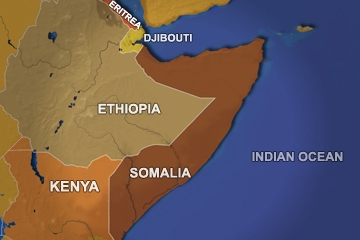
Food security students learn that drought and aridity are natural disasters and that famine is political but precautionary measures can be taken to prevent its repercussions. There are drought-stricken countries and regions in both the developed and third worlds but neither famine nor human suffering ensued as a result. The recurrent famines in the Horn of Africa, now at their worst, could have been prevented and prepared for.
However, bad planning, indifference, and even inability to foresee the looming problem are the key culprits in these famines. Although all the countries in the Horn of Africa—including Ethiopia, Kenya, and Djibouti—are affected by famine, Somalia was hit the hardest, especially in the south. This fact is attributed to a host of factors. One of which is the absence of an effective Somali government. Another is the fact that the current Somali Transitional Federal Government (TFG) is totally crippled and has only limited control over parts of Mogadishu, although it has been trying lately, with the aid of African Union peace-keeping forces, to extend this control, following the withdrawal of the Somali Youth Movement (SYM) from the capital in August 2011. The refusal of the SYM to deliver relief aid to areas under its control, which are most affected by the famine, further aggravates the crisis and impedes relief efforts. A third factor is the use of food by the US-led international community as a punitive weapon in their so-called war on terror, although Somalia ranks third in this war after the Indian subcontinent and the Middle East.